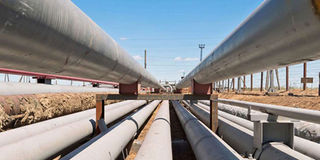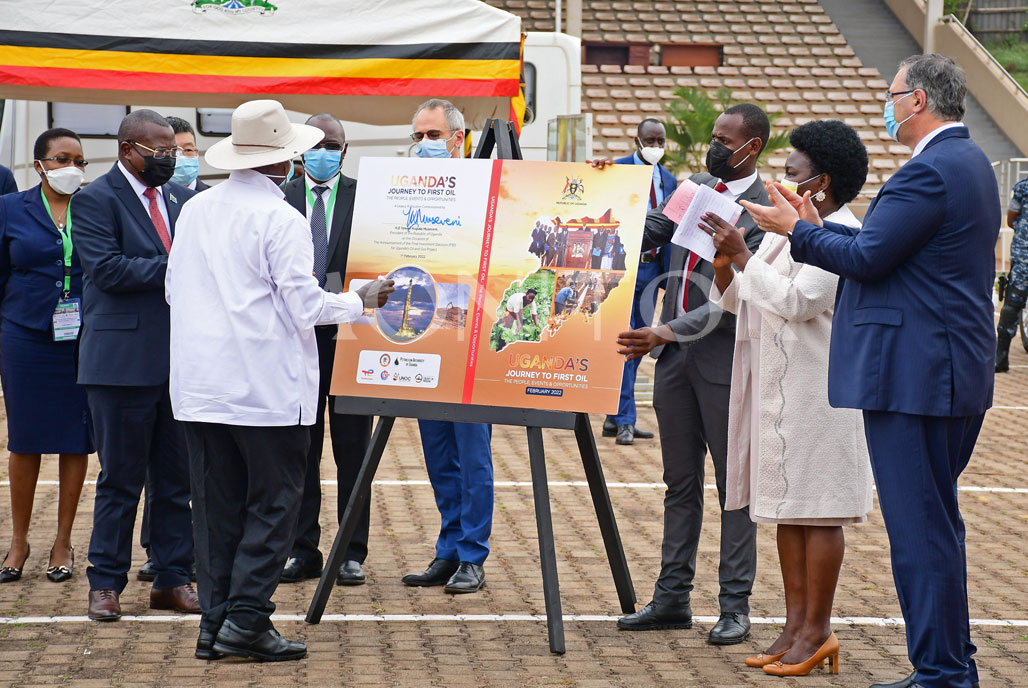Prime
Foreign firms tipped for Shs13t oil pipeline deal

Construction of the oil pipeline running from Hoima to Tanzania’s port of Tanga is expected to start next year. PHOTO/FILE
What you need to know:
- Australia’s Worley and Italy’s ISOF Construzioni SRL are some of the companies evaluated for the deal.
Four large international engineering companies are tipped for the development of the proposed East African Crude Oil Pipeline (EACOP), Daily Monitor has learnt.
This, according to the pipeline company executives, as construction of the 1,443km duct running from mid-western Uganda in Hoima to Chongleani terminal at Tanga Port in Tanzania at the Indian Ocean, is expected to start in 2023 and expected to run for two years leading to commercial oil production.
The four contractors tipped for the lucrative multi-billion dollar tenders include Australia’s Worley, formerly WorleyParsons Ltd after the acquisition and merge with Jacob’s Energy Ltd and Resources in 2019.
The company was evaluated for the Engineering, Procurement, and Construction Management (EPCM) tenders.
The second company, Italy’s ISOF Construzioni SRL, was evaluated to manage the coating plant for the pipes and fittings that will be laid from Hoima to Tanga.
The coating plant is at the seaside of Digo in Tanzania, and early civil works at the site of the plant are on-going. At the coating plant the plan is to deliver pipes, from all around, in batches of about 100 kilometres per month.
The plant itself will coat 100 kilometres of pipe a month, or roughly five kilometers of pipe per day.
French multinational companies, Schneider Electric is tipped for the third EITS—electrical, instrumentation, telecoms, and security—contract, which includes security, sensors, cameras and fibre optics, and Bolloré Logistics is tipped for the fourth logistics contract; to pick up all the required construction material from around the world and haul it to the Dar-es Salaam port en route to the interior.
“These (contractors) have been presented to local entrepreneurs both in Uganda and Tanzania through our local contract workshops,” the EACOP Company managing director, Mr Martin Tiffen, told Monitor.
The EACOP company is jointly owned by TotalEnergies Midstream B.V, the largest shareholder with 62 percent, Uganda National Oil Company (Unoc) and Tanzania’s oil company, TPDC, each with a 15 percent stake, and China’s Cnooc with 8 percent. The shareholding is concretised in the shareholders agreement, signed on April 11 last year at State House-Entebbe, and crystalised in the EACOP Act, which was passed by Parliament and assented to by the President.
The EACOP Act, in effect, provides the enabling legal and working framework for the proposed export oil pipeline.
Under Worley’s EPCM contract, Mr Tiffen said they are currently in talks with two other companies that will handle construction management.
“What they (Worley) have been doing up to now has been really engineering, and now we have FID, what they will move into is procurement, and then ultimately the level of construction,” he said. He added: “So the significance of Final Investment Decision (FID) for EACOP is that it allows us to move forward; we have been in the engineering and preparation phase. But now we will commit to the procurement as well.”
The government and the international oil companies, Cnooc and TotalEnergies EP last week on Tuesday announced the long awaited FID for Uganda’s oil project which includes oil fields in Nwoya, Buliisa, Hoima and Kikuube districts, respectively, and the EACOP.
The announcement of FID, in effect, sanctioning of the project with expected investments upwards $10b (Shs34trillion) in the development of the oil fields and the EACOP.
The estimated capital expenditure for development of the pipeline is between $3.55b (Shs13 trillion) and $5b (Shs17 trillion), 70 percent of which will be raised from international lenders.
Mr Tiffen indicated that construction of EACOP has been segmented into three lots—two in Tanzania, and one in Uganda—to fast-track construction.
“So basically we are going to have one construction contractor, who will be responsible of the construction from A to Z. So basically from Kabale to Tanga; all of that work will be with one contractor, and then the terminal with another one “contractor),” Mr Tiffen said.
He added: “Some contractors have the capacity to build, say 500 kilometres of pipe but not more, some can build in 1,500 kilometres. .. And then, depending on their responses and our dialogue with the contractors in the in the award phase, we made that final selection.”
For the most part of 2022, Mr Tiffen said the EACOP company will be working around the clock to acquire right of way for the project, compensation of projected affected persons in both Uganda and Tanzania. On the Tanzanian side, the project will affect some 9,000 persons.
Pipeline routes
The Ugandan section of the pipeline is about 296km through 10 districts and 25 sub counties, and 172 villages, and affecting at least 3,900 people. Eighty percent of the pipeline, 1,147km, will be on the Tanzanian side, and it is estimated that 80 percent of the project capex will be spent there. Tanzanian section will pass through 25 districts; Missenyi, Bukoba Rural, Muleba and Biharamulo in the Kagera region: Chato, Geita, Mbogwe and Bukombe in Geita region: Kahama township authority in Shinyanga region: Nzega, Nzega town council and Igunga in Tabora region: Iramba, Mkalama, Singida rural in Singida region: Hanang, Kiteto in Manyara region: Kondoa, Chemba in Dodoma region and Tanga city in Tanga region.
See Mr Tiffen’s interview om EACOP’s progress in tomorrow’s edition.




